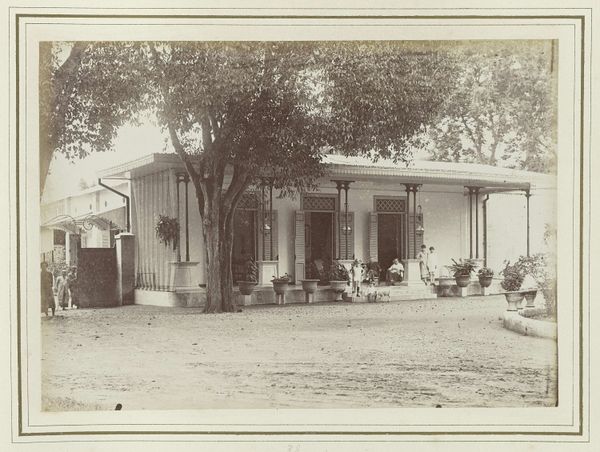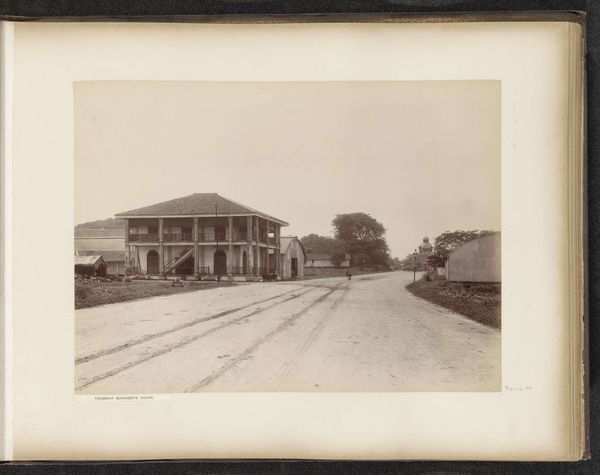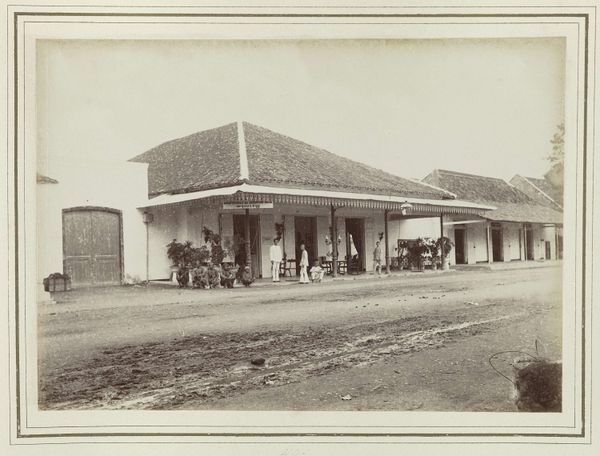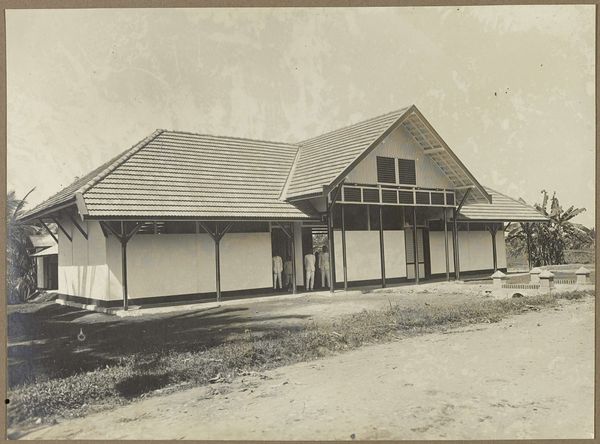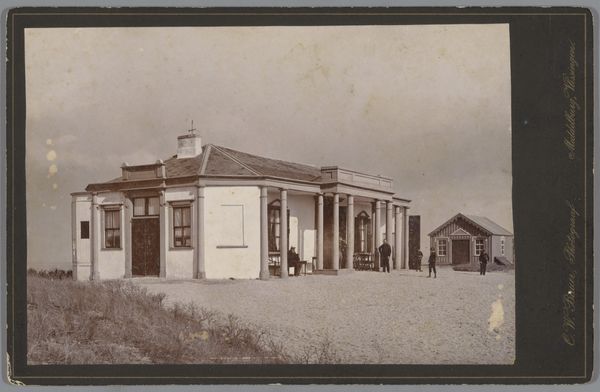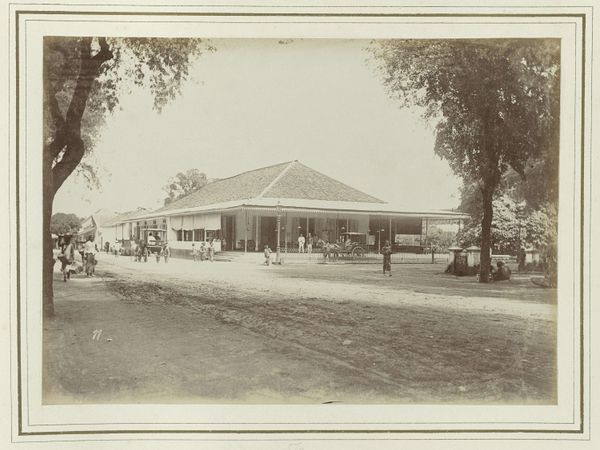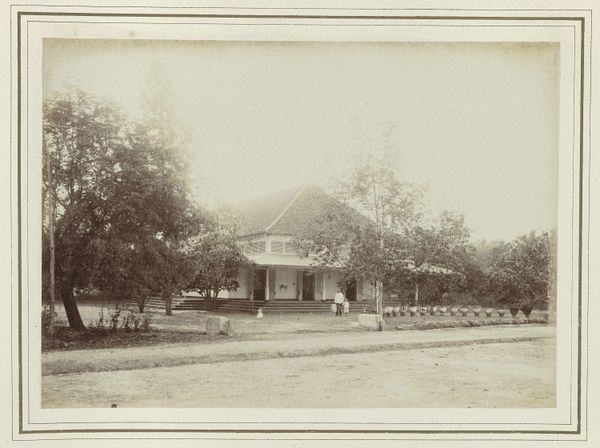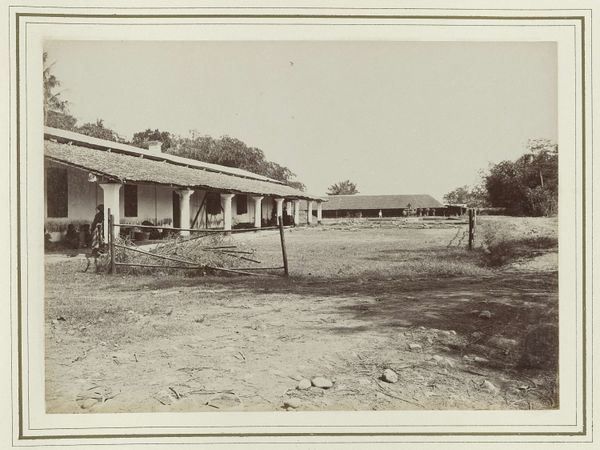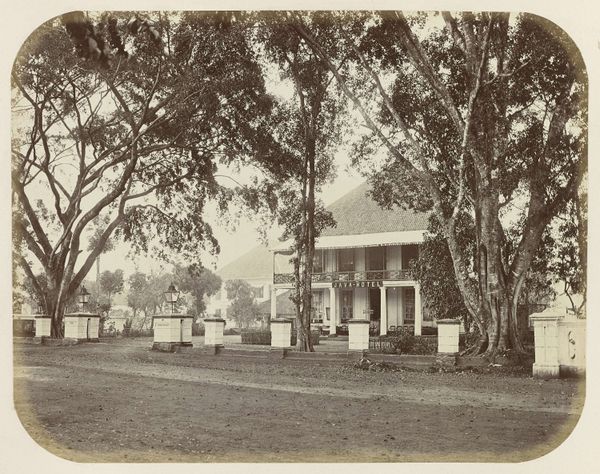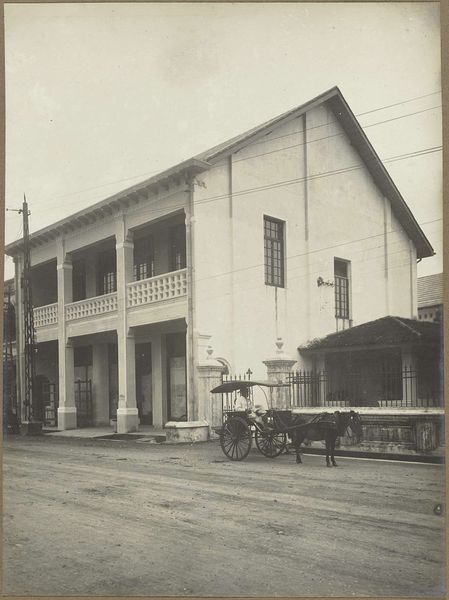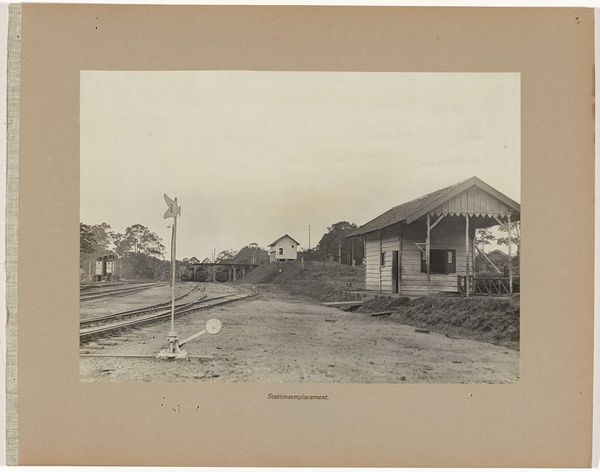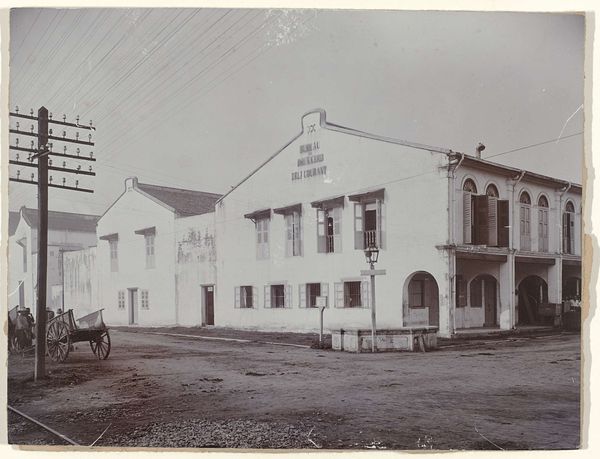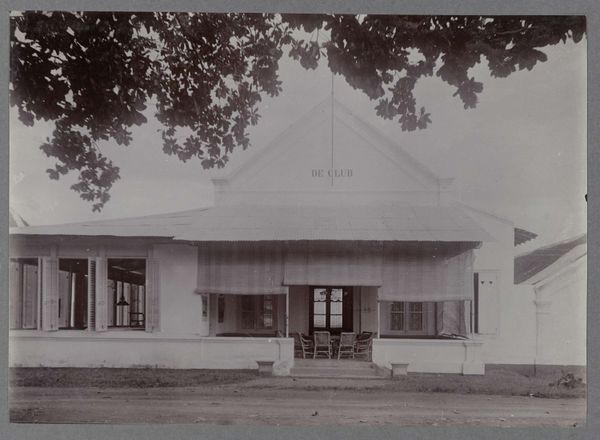
photography, gelatin-silver-print
#
indigenism
#
photography
#
historical photography
#
gelatin-silver-print
#
cityscape
Dimensions: height 150 mm, width 210 mm
Copyright: Rijks Museum: Open Domain
Curator: Before us is an 1886 photograph by Kassian Céphas, a gelatin-silver print titled "Apotheek van J. van Gorkum & Co." that offers a captivating cityscape. What strikes you first? Editor: The almost dreamlike quality; the way the sepia tones give it a hazy, nostalgic feel. And the scale is impressive; you feel the wide, open space. But the figures... they are almost ghostly, fading into the architecture. Curator: Yes, Céphas’s photographic process is central to its effect. Gelatin-silver prints allowed for sharper details and a wider tonal range, but you also had limitations regarding the subject's movement, explaining that stillness among the figures. Beyond the aesthetic, what can we unpack in terms of its socio-historical relevance? Editor: A photograph like this speaks volumes about the social structures of the time. The pharmacy likely served a specific demographic, perhaps a more affluent, colonial class in Java. The figures themselves-- their clothing, their stillness-- suggest a certain level of social control and a visual reinforcement of power dynamics. It’s a constructed image that reflects those existing inequalities. Curator: Precisely. It's also fascinating to consider how Céphas, an indigenous photographer, navigated these representations. He wasn’t merely a recorder; he was actively shaping the colonial gaze while operating within its constraints, earning a living, and crafting these photographs using available materials and production methods. Editor: This is such a critical point, recognizing agency in the act of creation. Thinking about this photograph, even now, it allows us to discuss enduring legacies of colonialism and question how those legacies continue to impact us today. It’s more than just a historical artifact. Curator: And perhaps more than just a picturesque street view of an apothecary, the materiality, labor and intended consumption makes it an invitation to further excavate the relationship between camera, colony, and culture.
Comments
No comments
Be the first to comment and join the conversation on the ultimate creative platform.
